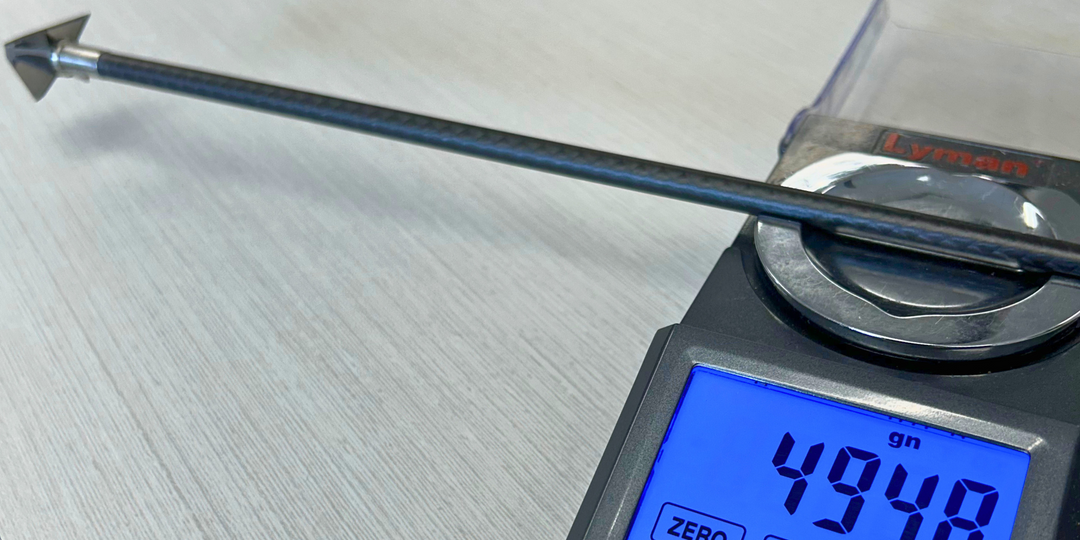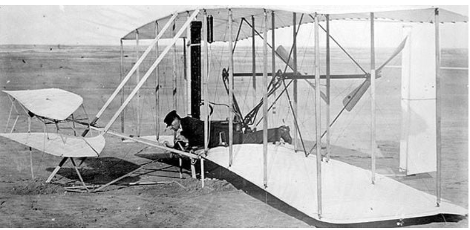Technical Archery Insights - Article 1. A Disregarded Entity
Synopsis: The sport of archery has evolved in large part separated from major advances in the science of ballistics. But demands by many modern bow hunters for increased velocity, longer effective range, and increased accuracy are driving the need for a better understanding of the underlying science involved in the flight of the arrow.
Through human conflict in the 19th and 20th centuries, major advancements in the science and technology of weaponry were achieved. However, by this time the bow and arrow had fallen out of favor as a weapon of war, replaced by the development and proliferation of the firearm. A civil war in the US along with two world wars spurred major advancements in the scientific understanding and the technological development of many weapons systems (e.g. airplanes, gun launched munitions, rockets and missiles, etc.). For example, one has only to examine the development of the airplane from the first flight of a fabric, wood, and wire creation barely able to sustain powered flight in 1903 (Fig. 1A) to the first flight of a supersonic rocket powered airplane in 1947 (Fig. 1B) to realize how quickly the science and technology of flight was advanced due to the cause and effect of war. The development period spanned two world wars and less than 50 years.

Fig. 1A. 1903 Wright Flyer. First successful powered heavier than air craft with a pilot aboard (Ref. 1).

Fig. 1B. 1947 Bell X1. First Aircraft to break the sound barrier (Ref. 2).
Likewise as illustrated in Figs. 2A-B, a similar story could be told of the advancement of firearms technology during this time period. At the start of the US Civil War in 1861 the standard issue firearm was a muzzle-loading single shot black-powder musket firing a lead bullet at ~950 ft/sec. By the onset of the Second World War, firearms development had progressed to breech-loading bolt action and semi-automatic rifles firing copper alloy jacketed bullets from metallic cartridge cases driven by smokeless propellants to velocities of ~2800 ft/sec.

Fig. 2A. 1861, M1861 Muzzle Loading Rifle (Ref.3)

Fig. 2B. 1940, M1 Garand Semi-Automatic Rifle (Ref. 4)
As a third example, less than 30 years after wartime development of the V2 rocket by German scientists (Fig. 3A), the Saturn 5 rocket (whose development was aided by many of these same scientists!) landed man on the Moon and safely returned him to Earth in 1969 (Fig. 3B).

Fig. 3A. 1945, V2 Rocket: Post War Test Launch (Ref. 5)

Fig. 3B. 1969, Saturn 5 Rocket Launch, Apollo 11 (Ref. 6)
The impetus behind these tremendous advances in technology involved a combination of need, dedicated resources including laboratories and research scientists, and the allocation of the equivalent of literally billions of dollars in government funding throughout the world. As a result of focused research, a new branch of science was matured: Aerodynamics, the study of forces and the resulting motion of objects through the air (Ref. 7). By the 1950’s, the equations of motion and the relevant variables required to describe the forces acting on an object in flight were not only fully developed, they were being routinely applied to aircraft, missiles and rockets, and gun launched munitions (Ref. 8). For a more in-depth discussion, Ref. 8 provides a detailed, mathematically intense look at advances in the field of ballistics in the modern, post Second World War era, written by and from the perspective of a government laboratory research scientist.
Unfortunately the bow and arrow, a weapon of tremendous military value for thousands of years was for all practical purposes left behind in relative obsolescence during this time period. Besides the falling away of military significance prior to the time when development of the science of aerodynamics was in full swing, reasoned conjecture suggests why the science of aerodynamics did not fully take hold in the archery community. First, the sport of target archery utilizing traditional equipment was well established; with more emphasis placed on proper form and technique rather than understanding arrow flight. Second, successful hunting with the bow and arrow was accepted and understood to be a short range affair, relying on the skill of the hunter to get very close to the animal before taking the shot. Third, the simple technology of the bow and arrow was well served by the traditional craftsman’s skill in producing relatively good equipment. In short there was NO NEED for the science. That is not to say that there weren’t tremendous innovations occurring during this time within the archery community. Technical advances such as aluminum and carbon arrow shafts, plastic fletches and their bonding agents, and the development of the compound bow all were being made within the community without external funding to do so. (However, there was likely indirect influence from general or specific knowledge gained during wartime technology development efforts in various industries, see Ref. 9).
Thus in relative isolation, without the knowledge or application of modern aerodynamic theory, the sport of archery has by necessity developed its own sometimes confusing and somewhat imprecise language to describe the behavior of an arrow in motion. For example, if outside the archery industry you ask a person to define paradox, they may say something to the effect of “two opposing ideas that in theory seem contradictory, but in actuality prove to be complimentary”. But even within the archery community, the term has different meanings. For traditional target archers the response may accurately be “the paradox is that the arrow is pointed in one direction but flies in a different direction when launched” with the implication that the arrow bends around the bow in a repeatable manner during launch. For bow hunters utilizing a modern compound bow, the term paradox may only mean that the arrow shaft bends at launch and/or at impact, i.e., “the arrow paradoxes in flight”. This example is only one of a multitude of common expressions and/or dictums in use within the archery community.
The problem of imprecise language is two-fold: First the technical language in common use by the archery community can be insufficient to describe important nuances in the flight behavior of the arrow. Second, just as it is nearly impossible to understand someone that speaks a foreign language, the language spoken by the archer is not immediately understood by the technical community at large, and the language of the technical community is not generally comprehended by the archery community.
At this point the reader may be asking, “So what? We’ve done just fine as archers for thousands of years. We don’t need eggheads coming in and trying to change things. Leave us alone!”. In response, the prudent observer may note that the sport of archery (and in particular bow hunting) is evolving rapidly. Consider that compound bows are launching arrows now at speeds well over 300 feet per second, and crossbows at over 500 feet per second. Popular events such as Total Archery Challenge are driving the archery industry towards better sights (even some with integrated electronics), more efficient bows, and greater accuracy at distances that would be considered impossible just twenty years ago. As launch velocity increases, the temptation to extend lethal distance will likely also increase.
Even if a bow hunter never intends to shoot past 30 yards with a fixed blade broadhead-tipped arrow, a miss may prompt the question “Was it me, my set up, or my equipment?” that caused the failure. An understanding of modern aerodynamic theory applied to archery can guide the selection of gear that is more forgiving under duress or in adverse weather conditions.
Finally, if for no other reason, opening the door to the language of the scientist offers answers to many basic questions beginning with the word “Why…”. Why does my arrow fishtail like that? Why does FOC matter? Why three fletches and not two? Why doesn’t my hunting arrow hit with my practice arrow? Why choose light-weight arrows? Why choose heavy-weight arrows?
In summary, we have brought to light how the sport of archery has developed essentially outside the modern weapons technology base established through warfare driven research. In the next article of this series, we will begin building the foundational concepts necessary to describe the behavior of the arrow in flight.
References
- McCoy, Robert L., Modern Exterior Ballistics, Schiffer Military History, 1999, pp. 10-31








Just discovered this resource. Appreciate you taking time and hope that it is still ongoing. Very interested in the flight pattern of this thread…
Well, you’ve got me reading. I’m hunting a Hickory self-bow this year and I have an understanding of “paradox” to say the least. Working on some tapered Ash and Cedar right now to see which will carry a 190 gr VPA to the mark.
Thanks for taking the time to share your insights and knowledge with us. Good Shooting→→→→CraigLooking forward to more!
Great article – thanks for sharing!
Leave a comment